#Youth4Soil in the Field | Hands-on Learning of Syntrophic Agriculture in Kenya
Story and photos by: Clemence Mnyika, Community Facilitator from Taita Taveta County, Kenya, with CIFOR-ICRAF and #Youth4Soil Mentee
Regenerative agricultural systems have become big in the world right now as people seek to scale biodiversity-friendly agricultural production.
A system introduced by Ernst Götsch, a Swedish farmer working in Brazil, syntrophic agriculture is one such method, entailing establishing an agroforestry system that mimics natural forest systems by maximizing the photosynthetic matrix through a combination of plants/ trees and crops at high density. Syntropic agriculture is an approach based on information and processes rather than inputs, resulting in increased resources and available energy.
From February 5th to 9th 2025, I and three other Community Facilitators working with CIFOR-ICRAF in Kenya were privileged to attend a Syntropic Agroforestry and Regenerative Regenerative Agriculture course at ForestFoods in Limuru, Kenya. It was an awesome 4-day training course with intensive learning about the topic coupled with lectures and field activities.
The Community Facilitators working on making new beds
As Community Facilitators, our role is to engage with local communities on gender and social inclusion issues in forest and landscape restoration. We act as a bridge between the scientific aspect of restoration and Indigenous knowledge, blending both into the implementation of restoration initiatives that grassroots communities will readily adapt. This ensures restoration efforts are practiced from the ground up.
ForestFoods courses envision a future that leverages the multidimensional benefits of agroforestry to overcome the challenges posed by climate change, securing a sustainable and prosperous future for its local communities. In the field, we got to try several activities from constructing planting beds and pathways, composting, applying manure, planting crops and trees, pruning and conducting surveys on the farm. I learned new and interesting agricultural techniques, such as pruning methods for banana which involves cutting off the whole stem of the shoot and planting it at an angle while covering it completely with soil.
Integration of trees and vegetables maximizing on space
Different succession visible in the tree lines
Using biomass to cover the soil and improve water retention
Presence of earthworms in a mature compost heap
My knowledge of sustainable agricultural practices has therefore exponentially expanded as a result of this course. I gained knowledge to take back to farmers on this resilient farm design is, and how it encompasses a holistic view that integrates various elements such as crop diversity, soil health, water management, and biodiversity, aiming to create systems that are not only efficient but also capable of withstanding and recovering from disruptions. By mastering the essentials of resilient farm design, farmers can better navigate the complexities of modern agriculture, safeguarding their livelihoods and contributing to a more sustainable food system for future generations.
Planting seedlings in the tree line
Learn more about the work I do scaling Nature-based solutions (NbS) in forest and landscape restoration (FLR) with CIFOR-ICRAF here:











